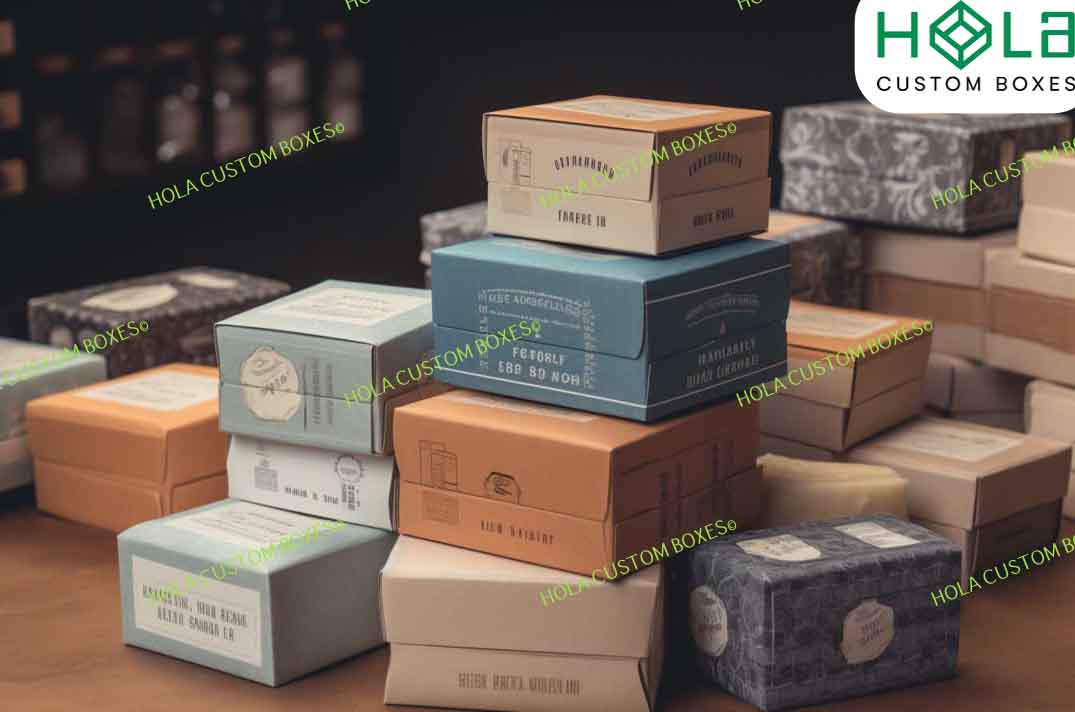How to Create Eco-Friendly Custom Soap Box Packaging

In an era where environmental consciousness is paramount, the creation of eco-friendly custom soap box packaging is not just a trend, but a crucial aspect of sustainable business practices.
This process begins with a thorough assessment of material sustainability, ensuring that resources are responsibly sourced and possess a minimal environmental footprint.
The design phase must focus on waste minimization, incorporating elements that reduce excess material use while maintaining structural integrity.
Selection of eco-friendly inks, derived from organic sources, is vital to avoid the introduction of toxic substances into the ecosystem.
A comprehensive life cycle analysis of the packaging allows for the identification of areas for improvement and optimization.
Incorporating clear messaging that encourages consumers to recycle and reuse can significantly amplify the environmental benefits of the packaging.
By adhering to these principles, businesses can contribute positively to the environment while also meeting consumer demand for green products.
Key Takeaways
- Evaluate the life cycle of materials and choose renewable, biodegradable, or recyclable resources
- Prioritize reducing waste and efficiency in material usage
- Select eco-friendly inks made from renewable resources and avoid harmful chemicals
- Conduct a comprehensive analysis of the packaging’s environmental impact and promote recycling and reuse
Assessing Custom Soap Packaging Material Sustainability
Assessing a material’s sustainability is a critical step in ensuring your custom soap box packaging aligns with environmental responsibility goals. To evaluate the eco-friendliness of potential materials, consider their life cycle—from raw material extraction to production, transportation, usage, and end-of-life disposal. Opt for resources that are renewable, biodegradable, or recyclable, thereby minimizing your product’s ecological footprint.
Materials such as post-consumer recycled paper, bamboo, or mushroom-based packaging offer sustainable alternatives. These options not only reduce waste but also often require less energy and water to produce compared to conventional materials. To ensure credibility, seek certifications like the Forest Stewardship Council (FSC) label, which verifies that the paper products used come from responsibly managed forests.
Selecting sustainable materials is a tangible way to contribute to environmental conservation and can also enhance brand image among eco-conscious consumers.
Soap Box Designing for Minimal Waste
Every design decision should prioritize reducing waste, emphasizing efficiency in material usage and packaging dimensions. When creating custom soap box packaging, designers must consider the life cycle of the materials to ensure minimal environmental impact.
Opt for designs that use the least amount of material while still protecting the product. This can be achieved by evaluating the packaging size relative to the soap and eliminating unnecessary layers or components that do not add value.
Innovative folding techniques can reduce or eliminate the need for adhesives, which often hinder recycling. Utilize die cuts strategically to minimize offcuts and design for disassembly, enabling consumers to easily separate recycling materials.
Ultimately, designing for minimal waste demands a balance between aesthetic appeal, brand requirements, and environmental stewardship.
Choosing Eco-Friendly Inks For Custom Soap Boxes
Regarding ink selection, it is imperative to choose eco-friendly options that do not compromise the recyclability of custom soap box packaging. Traditional printing inks often contain volatile organic compounds (VOCs) and heavy metals that can be harmful to the environment.
To address this, manufacturers should opt for inks made from renewable resources like soy or vegetable oils. These biodegradable inks not only reduce the ecological footprint but also ensure that the packaging remains recyclable.
Furthermore, the use of water-based inks can decrease the emission of VOCs, promoting a healthier workplace and reducing air pollution.
Companies need to verify that the inks they select comply with environmental standards and contribute to a sustainable packaging solution.
Soap Packaging Life Cycle Analysis
Sustainability assessment of custom soap box packaging necessitates a comprehensive life cycle analysis to ascertain the environmental impact from production to disposal.
This analysis evaluates the entire journey of the packaging, beginning with the extraction and processing of raw materials, followed by manufacture, distribution, usage, and finally end-of-life management including recycling or degradation.
Each phase is scrutinized for energy consumption, carbon footprint, resource depletion, and waste generation.
Employing such a methodical approach enlightens manufacturers and consumers about the true ecological cost, guiding more informed decisions.
Identifying hotspots of environmental stress within the cycle enables targeted improvements, such as selecting renewable resources or optimizing production processes, thereby reducing the overall environmental burden and fostering a more sustainable packaging solution.
Promoting Recycling and Reuse Of Custom Soap Box Packaging
Building on the life cycle analysis, promoting recycling and reuse of custom soap box packaging is essential to minimize environmental impact and close the loop in the product’s life cycle.
Manufacturers must design packaging with recyclable materials and clearly label recycling instructions to facilitate proper disposal.
Encouraging consumers to repurpose soap boxes can extend their usability and delay entry into the waste stream. For instance, brands can innovate by integrating designs that transform the packaging into secondary items, such as storage containers or decorative objects.
Conclusion
In conclusion, the development of eco-friendly custom soap box packaging necessitates a comprehensive approach that embraces material sustainability, waste minimization, the utilization of environmentally benign inks, and a thorough life cycle analysis.
Moreover, it is imperative that such packaging is designed with the end-of-life in mind, promoting recycling and reuse to ensure a minimal environmental footprint.
Embracing these principles is not only beneficial for the environment but also aligns with the growing consumer demand for sustainable products and packaging solutions.
